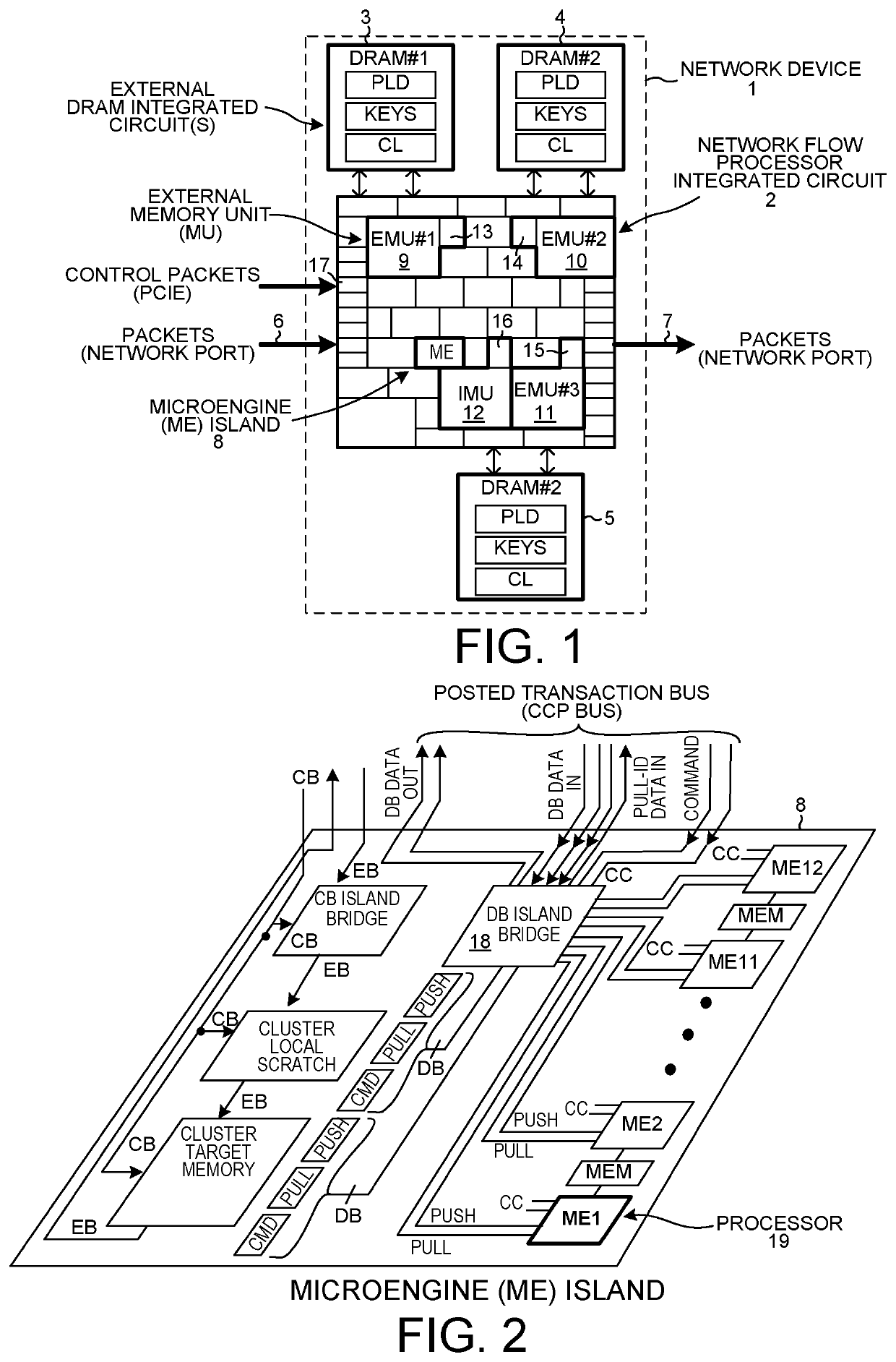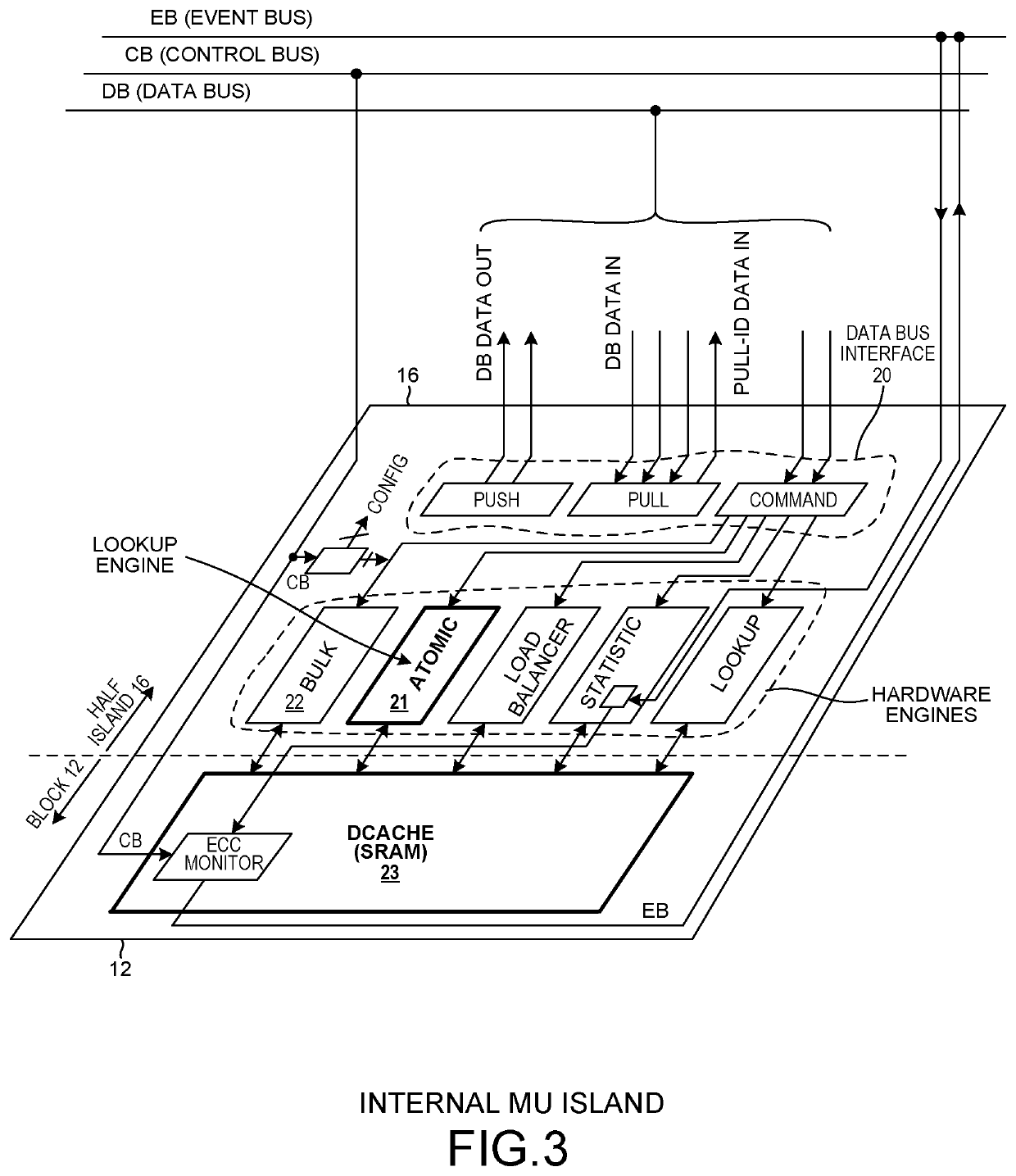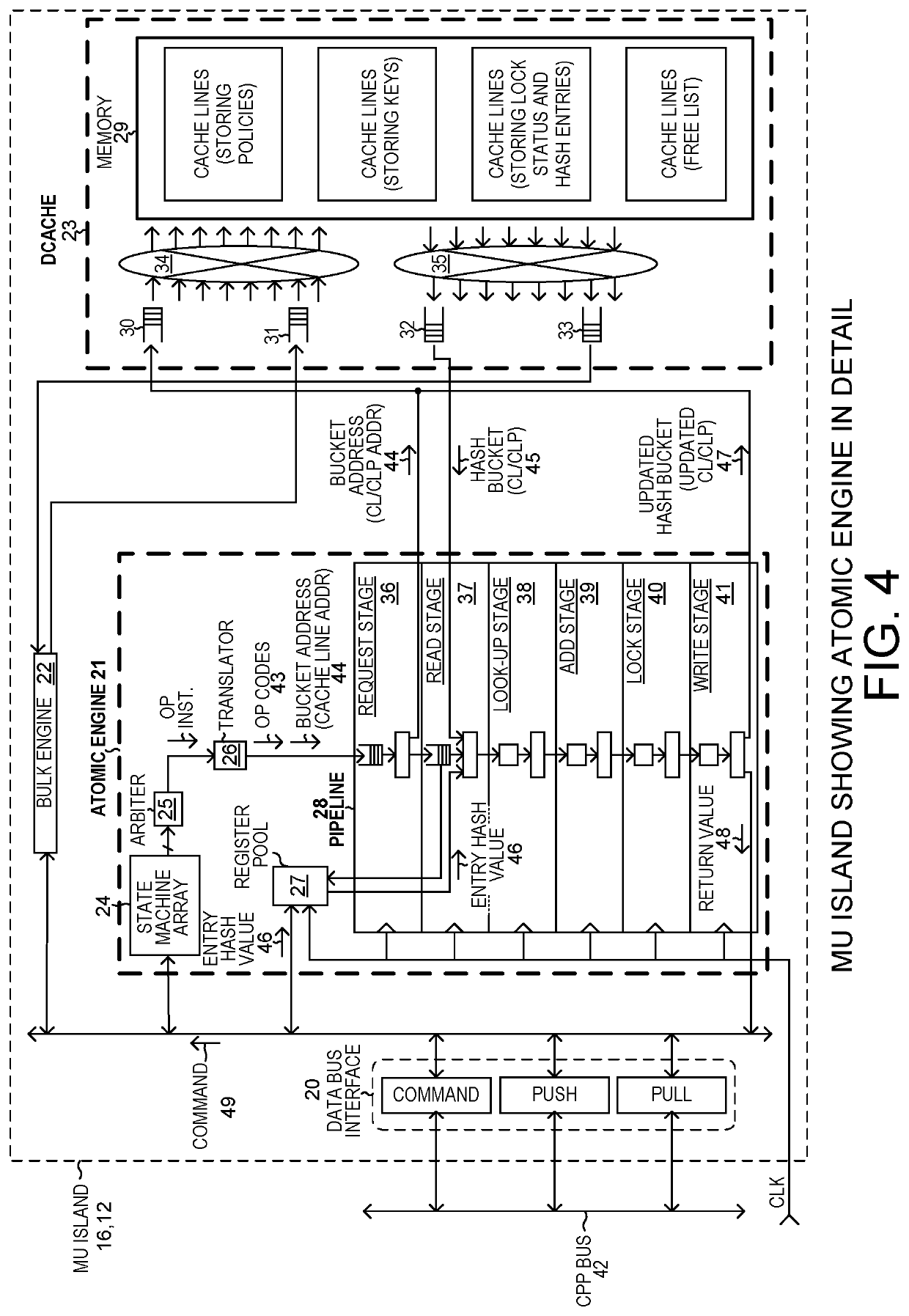High-speed and memory-efficient flow cache for network flow processors
a network flow and flow cache technology, applied in the direction of digital transmission, unauthorized memory use protection, instruments, etc., can solve the problems of two cache lines missing, low processing efficiency, and low processing efficiency, so as to speed up the flow cache operation, reduce the amount of memory accessing, and add the effect of flow cache quickly and efficiently
- Summary
- Abstract
- Description
- Claims
- Application Information
AI Technical Summary
Benefits of technology
Problems solved by technology
Method used
Image
Examples
Embodiment Construction
[0035]Reference will now be made in detail to some embodiments of the invention, examples of which are illustrated in the accompanying drawings.
[0036]FIG. 1 is a block diagram of a network device and system 1. The device 1 includes an Island-Based Network Flow Processor (IB-NFP) integrated circuit 2, and three external Dynamic Random Access Memory (DRAM) integrated circuits 3-5. The IB-NFP integrated circuit 2 includes a peripheral first area of input / output circuit blocks. Some of the input / output circuit blocks are for communicating network packets, such as IPv4 packets or IPv6 packets, into and out of the IB-NFP integrated circuit. Others of the input / output blocks are for interfacing the IB-NFP integrated circuit to the external DRAM integrated circuits 3-5. Others of the input / output blocks are for interfacing the IB-NFP to a host computer via a PCIe bus or buses. In the illustration, IPv4 network packets 6 are received onto the overall device and onto the IB-NFP via one of a p...
PUM
 Login to View More
Login to View More Abstract
Description
Claims
Application Information
 Login to View More
Login to View More - R&D
- Intellectual Property
- Life Sciences
- Materials
- Tech Scout
- Unparalleled Data Quality
- Higher Quality Content
- 60% Fewer Hallucinations
Browse by: Latest US Patents, China's latest patents, Technical Efficacy Thesaurus, Application Domain, Technology Topic, Popular Technical Reports.
© 2025 PatSnap. All rights reserved.Legal|Privacy policy|Modern Slavery Act Transparency Statement|Sitemap|About US| Contact US: help@patsnap.com



